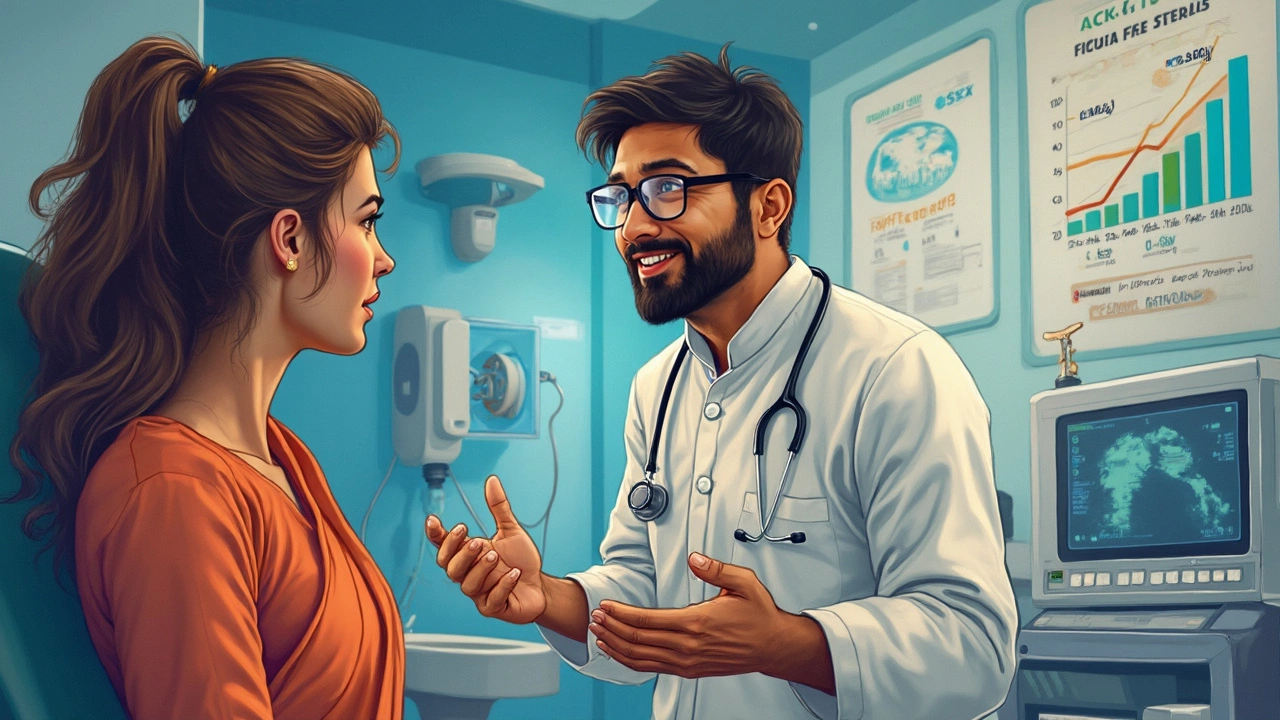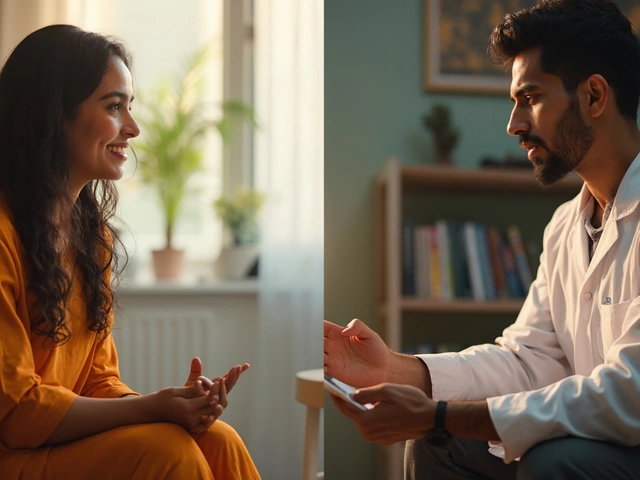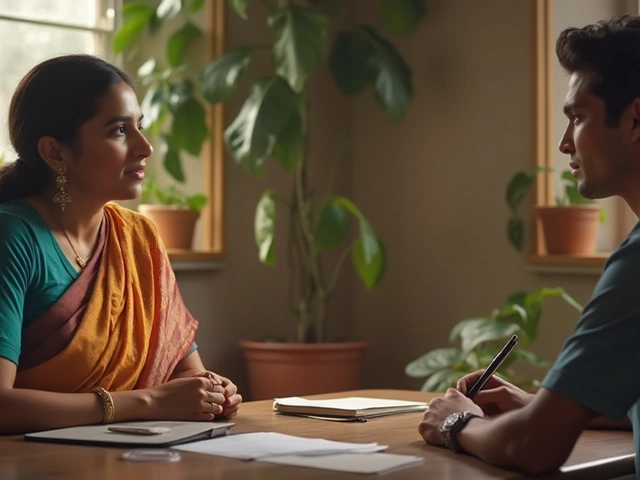Cancer isn't just one disease but a collection of over 100 different conditions. Fortunately, some of these are very curable today. But how do we define 'curable' when it comes to cancer? It's typically when patients live long lives without the disease returning after treatment. So, let's dive into which cancers fall into this category.
One of the best-known examples is testicular cancer. It's one of the most curable cancers, especially when caught early. With a combination of surgery and, if necessary, chemotherapy, the cure rates soar over 95%. Now, wouldn't you say that's pretty reassuring?
Another cancer with high curability is thyroid cancer. The majority of thyroid cancer cases are papillary or follicular, both having excellent treatment outcomes. Again, early detection plays a huge role, typically through routine examinations or imaging tests. So, keeping up with those friendly reminders from your doctor can make a big difference.
- Understanding Cancer Curability
- Examples of Highly Curable Cancers
- Key Factors in Treatment Success
- The Role of Early Detection
- Innovations in Cancer Treatment
- Tips for Navigating a Cancer Diagnosis
Understanding Cancer Curability
Not all cancer treatments are about prolonging life; some aim to cure the disease for good. But what does it mean when we say a cancer is 'curable'? It's about the likelihood of totally eliminating the cancer and having a low chance of it coming back. This concept typically revolves around survival rates and remission.
The Role of Five-Year Survival Rates
When experts talk about cancer being curable, they often refer to the five-year survival rate. This is the percentage of people still alive five years after their diagnosis—it doesn't mean they'll pass away after that time. High survival rates after five years often indicate a good chance of a long, healthy life due to complete treatment.
Factors Influencing Curability
Whether a cancer is curable depends on several factors. Early detection is one of the biggest keys. Cancers found at an early stage, when they're small and haven't spread, are usually easier to treat successfully. The type and aggressiveness of cancer also play a role, as well as the availability of effective treatments.
| Cancer Type | Five-Year Survival Rate |
|---|---|
| Testicular | 95%+ |
| Thyroid | 98%+ |
As these statistics show, some cancers have really high survival rates, making them highly likely to be cured given prompt treatment.
Personalized Treatment Plans
Thanks to advances in modern medicine, treatment plans are often tailored to the individual's type of cancer and personal health. For instance, some patients may require surgery, while others might undergo radiation or chemotherapy. These personalized treatments can significantly improve the chances of a cure.
So, when looking at curable cancers, the focus remains on early detection, suitable treatment options, and ongoing medical research, all of which offer real hope to thousands confronting a cancer diagnosis each year.
Examples of Highly Curable Cancers
It's a common misconception that all cancers are equally dangerous. Some, in fact, are highly treatable, especially when diagnosed early. Let's break down a few.
Testicular Cancer
Testicular cancer tops the list when it comes to curability. About 95% of cases are cured, often with a combination of surgery and chemotherapy. Catch it early, and chances are extremely high that you'll be cancer-free in no time.
Thyroid Cancer
Thyroid cancer, particularly types like papillary and follicular, have strong outcomes. "Surgery is often all you need for a full recovery," says Dr. Emily Norton from the American Cancer Society. Early detection through regular check-ups can ensure a simple surgical intervention rather than more drastic measures.
Prostate Cancer
Thanks to screening advancements, prostate cancer is often found early. This makes it much easier to treat effectively. Hormonal treatments, radiation therapy, and sometimes surgery lead to high cure rates. Maintaining annual screenings once you're above a certain age is crucial for early diagnosis.
Skin Cancer
You might think skin cancer sounds like a serious threat, but types such as basal cell and squamous cell are highly treatable, particularly if they haven't spread. About 90% of skin cancers are cured through simple outpatient procedures.
According to data from the Global Cancer Research Foundation:
| Cancer Type | Cure Rate |
|---|---|
| Testicular Cancer | 95% |
| Thyroid Cancer | 85-90% |
| Prostate Cancer | 90% |
| Skin Cancer | 90% |
The effective treatment of these cancers heavily relies on early diagnosis. Regular health check-ups remain key. — Dr. John Peterson, Oncology Specialist
It's comforting to know that many cancers can be treated successfully, thanks to current medical knowledge and technology. The key is to stay informed, proactive, and vigilant about one's health.
Key Factors in Treatment Success
When it comes to beating cancer, there's a whole mix of things that can make the treatment more successful. It's not just about the meds or therapies themselves but also about timing, type of cancer, and a whole lot of other stuff.
Early Detection
This one sits at the top of the list. Spotting cancer early can mean the difference between a complicated battle and a pretty straightforward victory. Whether it's catching skin changes early or noticing unusual lumps, being proactive is key. The earlier we find out, the easier it is to tackle with effective treatment options. This makes regular check-ups and being in tune with your body super important.
Type of Cancer
Not all cancers are created equal, as some are more responsive to treatment than others. For instance, testicular cancer and early-stage thyroid cancer are generally more curable compared to other types. Knowing the specifics of your diagnosis helps tailor the treatment plan to maximize success.
Treatment Plan
The treatment game plan itself, often a combination of surgery, chemo, and radiation, is crucial. It's kind of like assembling a team—each play a part in knocking cancer out. Advances in technology have brought in new and improved treatments that increase survival rates. Personalized medicine, where treatment is custom-made for your cancer type and genetic makeup, is changing the way doctors approach treatment.
Patient's Overall Health
A patient's general health can play a huge role too. The better you're feeling physically, the more likely you can handle aggressive treatments. Things like maintaining a balanced diet, regular exercise, and stress management aren't just cliches—they actually contribute to a better treatment outcome.
Support System
Emotional and psychological support can't be overlooked either. Facing cancer is tough, and having a solid support system can make all the difference. Whether it's friends, family, or support groups, these relationships help patients stay positive and resilient during the treatment journey.
In short, successful cancer treatment often boils down to a mix of early detection, type of cancer, a well-thought-out treatment plan, the patient's overall well-being, and a strong support network. With all these factors working together, the odds of a positive outcome shoot up.

The Role of Early Detection
Without a doubt, early detection plays a massive role in treating and even curing cancer. It might just be the most important step you can take in beating certain types of cancer. Catching the disease before it spreads means better treatment options and higher cure rates.
Let's talk about skin cancer for a moment. Regular checks and being mindful of changes in your skin can make a world of difference. Finding melanoma early, when it's small and hasn't gone deeper, ups the chance of successful treatment significantly.
Breast cancer is another case where early detection can save lives. Thanks to mammograms, many small and localized tumors are spotted before they turn into a real threat. It's like having a head start in the treatment race.
The Importance of Screening
People often underestimate the power of routine screening. Whether it’s colonoscopies for colorectal cancer or Pap smears for cervical cancer, screenings can spot problems before symptoms even show up. They catch cancer early, when it’s easiest to treat. So, keeping up with these tests can be a game-changer.
- Colonoscopies can detect not only cancer but also pre-cancerous polyps, giving you a chance to address the issue early.
- Regular mammograms can catch breast cancer up to three years before symptoms appear.
- Pap smears can identify changes in cervical cells long before they develop into cancer.
Advances in Detection Technology
Technology is evolving, bringing even more advanced ways to detect cancer early. From liquid biopsies that find cancer DNA in the blood to AI-driven imaging techniques, these advancements could increase survival rates even more in the near future.
So, if there's one takeaway, it's this: don't skip those screenings. Listen to your body and see a doctor if something feels off. Early detection is your best ally in the fight against cancer.
Innovations in Cancer Treatment
Cancer treatment has come a long way, and today's advancements are pretty mind-blowing. It's not just about chemo and radiation anymore. We're talking about game-changing technologies that are boosting those cancer treatment success rates.
Immunotherapy: The Body's Own Defense
Immunotherapy leverages your immune system to fight cancer cells. It's like training an army specifically to tackle invaders. Treatments such as checkpoint inhibitors or CAR-T cell therapy fall into this bucket. They're not only reducing tumor sizes but, in some cases, eliminating them for good.
Precision Medicine: Customizing Care
Precision medicine tailors treatments based on genetic understanding. Doctors analyze tumor genetics to choose the exact drugs likely to work. It's a much more focused approach, making it one of the exciting innovations in cancer treatment.
Targeted Therapy: Zeroing in on Cancer
Targeted therapy works like a laser pointer, aiming drugs directly at cancer cells, sparing the healthy ones. This method means fewer side effects and often better outcomes. And let's be honest, no one misses the brutal side effects of broader treatments.
Advanced Screening Methods
Detecting cancer early is key, right? Thanks to innovations like liquid biopsies, spotting some cancers is now as simple as a blood test. If that sounds futuristic, well, the future is now.
Artificial Intelligence: Smarter Decisions
AI is also playing its part, helping doctors to analyze data and predict outcomes. This can lead to more accurate diagnoses and personalized treatment plans.
Check out this quick breakdown of how these innovations stack up:
| Innovation | Impact on Treatment |
|---|---|
| Immunotherapy | Boosts immune response, significant results in certain cancers |
| Precision Medicine | Tailors drugs based on genetic info, more effective |
| Targeted Therapy | Reduces side effects, focuses treatment |
| AI and Screening | Allows early detection and better planning |
All these advances are amazing news for anyone battling cancer. They’re giving patients better outcomes and, crucially, more hope.
Tips for Navigating a Cancer Diagnosis
Getting a cancer diagnosis can hit you like a ton of bricks. But don't lose hope. Navigating this journey can be overwhelming, but with some practical steps, you can manage better.
1. Get the Facts Straight
Knowledge is power. Start by asking your doctor the right questions. What's the specific type of cancer? What stage is it? What treatment options are available? The more you know, the better you can plan.
2. Build a Support Network
Lean on family and friends. They are your pillars through this. Joining a support group can also connect you with people who understand what you're going through. Online forums can be a helpful space to share stories and advice.
3. Stay Organized
Keeping track of medical appointments, medications, and treatments is crucial. Consider setting up a binder or using a digital app to maintain all information in one place. This will ease stress and ensure nothing falls through the cracks.
4. Look After Your Health
While it might be tempting to curl up and do nothing, staying as active as possible can help maintain your overall well-being. Eating a balanced diet, getting enough rest, and some gentle exercise can make a difference.
5. Consider a Second Opinion
It's okay to seek another professional's advice. It can provide clarity, ensure all treatment options are considered, and confirm your current doctor's approach.
6. Financial Planning
Cancer treatment can be costly. It's important to review health insurance and know what is covered. Discuss with a financial advisor or social worker at the hospital to explore options and resources.
Cancer treatment decisions are personal, and what works for one might not be right for another. It's essential to make informed decisions in partnership with your healthcare team. Remember, you are not alone in this fight, and help is available if you reach out for it.





